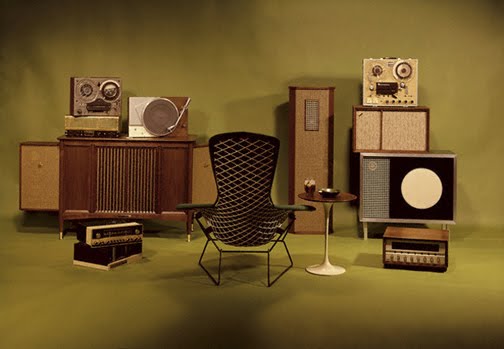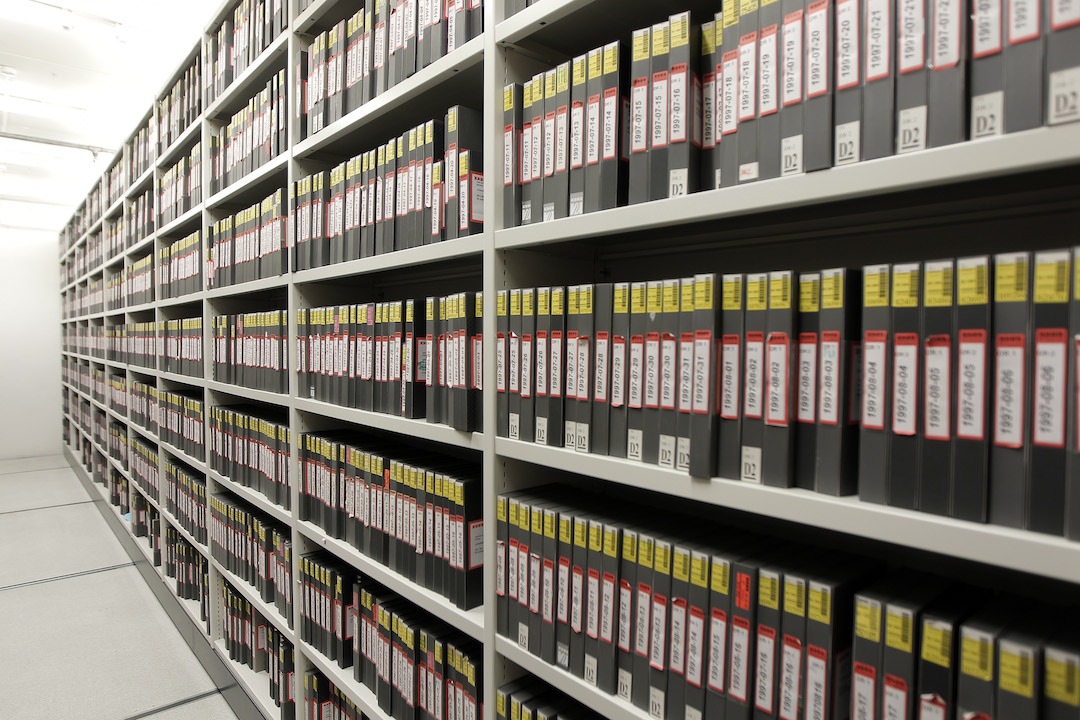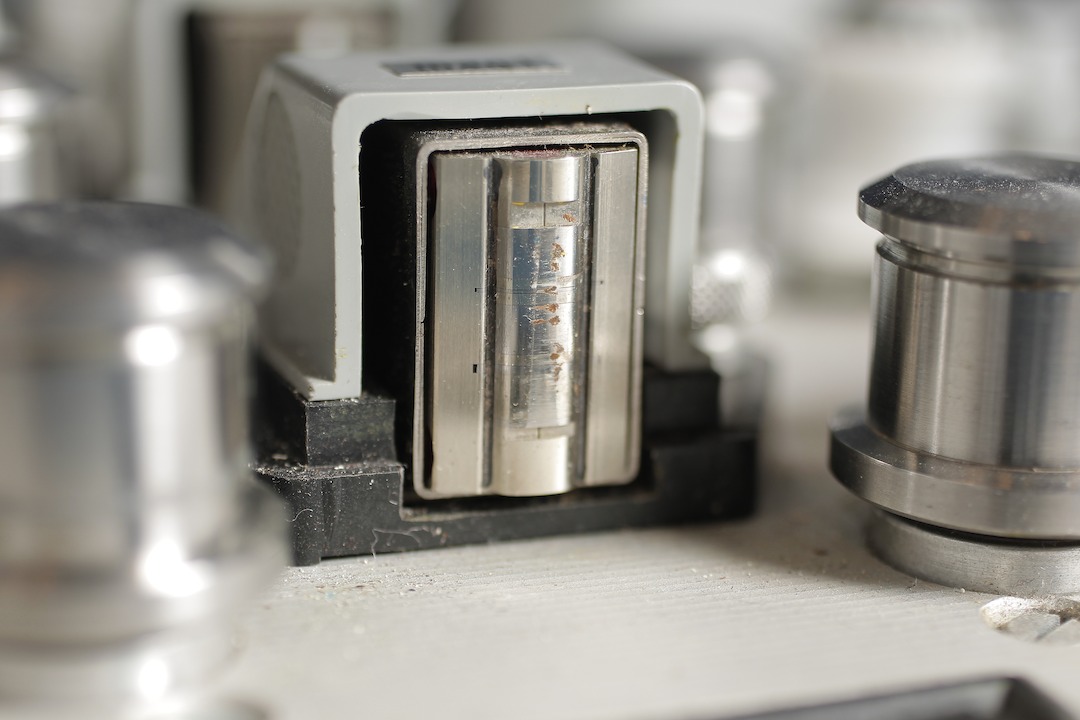Op Ed: Analog Tape and Why I Don’t Miss It

Blast From The Past: Some of the devices necessary for music playback during the days that tape was king.
Few topics stir up as much strong emotion among audio professionals as analog tape can.
Musicians and engineers alike love to romanticize about how warm and musical tape sounds, how it forces you to make decisions and commit to sounds without being able to “undo” it all, and how it prevents you from getting caught up in looking at the music on your computer, forcing you to listen more closely.
While this is all true to an extent, it’s also safe to say that some of the same people who extol these virtues today were never restricted to using analog tape as their only recording medium in the past.
Anyone who recorded professionally (or otherwise) before the early or mid 1990s likely had to rely on analog tape as his or her sole option for some time.
Before that time, there were few other good-sounding choices available that were reasonably affordable. And with tape, you really needed a high-priced professional machine to get truly good results. The semi-pro 1”, 16-track tape machines available then were often no better than an ADAT, and in some cases, could actually be worse.
It wasn’t until modern DAWs like Pro Tools, Nuendo and Digital Performer became more viable and ubiquitous that professional studios started getting away from analog tape. And it really wasn’t until digital convertors started sounding good that digital became their primary choice.
Tape in the Early Days of Digital
Many pros were using Pro Tools in the 1990s, but at the time, they must have decided that sacrificing a a little bit of sound quality was well worth the convenience and power that Pro Tools afforded.
Pro Tools users of that era wanted to be able to edit freely and increase the number of available tracks, and it was OK if it didn’t sound quite as good just yet. It was a worthwhile tradeoff to them, and opened up possibilities that were practically impossible before.
I was one of those who was a bit late to the party when it came to digital workstations, mostly because whenever I used one early on, everything seemed to sound strange—just a bit different than what I had put into it. I wasn’t clinging to my analog past, even back then. I just like to use things that sound good to me, and digital didn’t. Yet.
Once I finally heard a digital system I liked the sound of however, I jumped in and never looked back. I can still remember using Rosewood Studio’s dual iZ RADARs synchronized with a 24-track tape machine and just thinking that things just couldn’t be better: I had tons of tracks but was still getting the benefits of analog coloration where I wanted them, on things like the drums and guitars. But in fact things could get better still, and proceeded to get even better over time.
When Digital Came of Age
When it comes to audio quality, digital does you no favors, but it takes nothing away either.
With good convertors (which even the early RADAR systems had) you pretty much get back what you put into it. If it sounds good going in then it sounds good coming back. And that never changes from the first play to the 501st play.
With digital, editing is easy and non-destructive. Storage is relatively cheap (and keeps getting cheaper) so it’s no big deal to do several takes, keep them all and then pick the best one. You don’t have to worry about setting levels to optimize the signal-to-noise ratio of analog tape while avoiding excessive compression and saturation. You just have to avoid digital “overs”, which is pretty easy by comparison, if you ask me.
There’s still no doubt in my mind that analog tape can still help drums and guitars sound really nice. It’s a fairly linear format until you start to approach the point of tape compression and saturation, and once you cross the compression threshold you get the added benefit of a near-perfect compressor, which makes the tracks feel smoother and denser, with a bit of level averaging. It can make certain sounds more “finished”, more like what we’re used to, more like a “record”.
Outweighing these benefits for me are some negative side effects of tape that many don’t consider unless they’ve ever used tape extensively or exclusively.
Why I Don’t Miss Tape
The first drawback of analog tape that comes to mind is that the sound of tape will always continue to change and degrade over time. There is no way around this: The more you play a tape, the more its sound changes. This is generally manifested as a gradual roll-off of high frequencies.
This happens very gradually, and is only perceptible if you do a direct comparison of the tracks immediately after you record them (stored on another lossless medium) with those same tracks after you have played the tape again and again. And trust me, over the course of a project you will play the tape hundreds upon hundreds of times.
Along with this unavoidable degradation, there is something known as “print through”. Print through is exactly what it sounds like: The recorded signal prints through the tape onto the tape that is adjacently packed tightly below it on the reel. This shows up as an echo that pokes its head out from the noise floor.
If the tape was stored “tails out” then the echo occurs after the signal and is generally buried in the music. If the tape was stored “heads out”, however, then it leaves a “pre-echo” that is plainly audible in breaks and in quiet parts of the song. And there’s no easy way to hide it. Nice, huh?
There is also the problem of tape machines failing to play back at a stable speed. Oh yes, this happens.
When I ran Rosewood Studio in El Paso, we had a professional-quality MCI JH-16/24 tape machine. Although this was a pretty good-sounding machine, at times it had some serious speed and stability problems.
The MCI’s capstan motor was controlled by the Phase Locked Loop or “PLL” Board, and sometimes it just didn’t function properly. This series of machines had IC sockets that were notoriously problematic, and were manufactured using a strange kind of metal that would lead to corrosion of the pins, prematurely and completely. When the pins on an IC are corroded, they don’t perform properly. And when you have a board filled with these types of sockets, well, you can guess what might happen.
Even after we replaced all of the IC sockets in the machine with corrosion-free gold sockets, the PLL Board still had some Molex pin-header connectors that were manufactured using pot metal. Again, not the best choice for electrical connections, especially in circuits that rely on consistent timing and logic.
There were numerous times that problems with tape speed and stability cropped up right in the middle of a session. I can assure you, there is no stress in recording that is quite like the stress of not knowing whether you can massage a tape machine into cooperating while you have a studio full of musicians paying handsomely to use your studio.
What’s worse, is that at the time, that was my only tape machine. It’s a lot harder to set aside the resources for a backup multitrack tape machine than for a backup studio computer. If the machine did not work, then the session was done for the day—or at least until I was able to get a tech in there to fix it. Not ideal. It didn’t happen often but when it did, it was memorable.
Even tape machines that are working perfectly still require a great deal of maintenance, daily care and feeding.
You have to clean and demagnetize the heads, rollers and guides. You have to align them, which on an MCI JH 16/24 is a process that takes about an hour and a half.
Plus, you really want the machine to warm up before you align it, so it needs to be on for at least 15-30 minutes before you start the alignment procedure. As an added bonus, you can’t charge your clients for that time—that’s on you. In other words, you get to show up 2 hours before the session…for free!
And one more thing: Tape machines need tape.
Tape is not cheap, and if you’re going to be recording on tape regularly, then you need to have it on hand so your clients can purchase it from you for the session. Even though you eventually make the money back when you sell it to the client, you still have to lay out that money upfront. It used to cost about $150 per 2” reel, but that cost has probably doubled by now.
While I’m sure that current tape manufacturers do an excellent job of assuring the quality of their product, I would suspect that their runs of tape are much smaller than those of Ampex, Scotch and AGFA in the 70’s, 80’s and 90’s.
A friend of mine who was very familiar with the tape manufacturing process said that they used to throw out the early batches of tape stock during a long manufacturing run because as the batch ran longer, the quality of the tape improved. I would imagine that due to today’s significantly lower tape sales, that current tape manufacturers cannot afford this same level of overhead expense.
I’m not saying that tape does not have its benefits and virtues, because it certainly does, and I plan to expound on them in an upcoming post. I still like tape and miss many things about it, and I still try to recreate some of its best attributes when I work digitally today.
It’s just that the ease, consistency, stability and flexibility I am used to with digital has made my desire to actually use tape disappear into oblivion. Maybe if I forced myself to still use it once in a while, my tape love affair might be rekindled…that is, until I had to come in extra-early for a session just to align the machine…
Mike Major is a Mixer/Producer/Recording and Mastering engineer from Dunedin, FL.
He has worked with At The Drive-In, Coheed and Cambria, Sparta, Gone is Gone, As Tall as Lions, and hundreds of other artists over the last 30 years.
Major is the author of the book Recording Drums: The Complete Guide.
Please note: When you buy products through links on this page, we may earn an affiliate commission.









Eric Seaberg
November 24, 2016 at 3:38 pm (8 years ago)I’ve been in the business for over 45-years, growing up with nothing but analog. One of the things you forgot to mention in your article was working with tape made you a better engineer. You HAD to get it right going to tape because you couldn’t really fix it later… NO UNDO BUTTON. When you did a punch-in, it wasn’t a new ‘take’ but you were ERASING what was there before. You’d BETTER be right!!
IMHO, computers have made current engineers feel like they don’t have to use their ears to make decisions, as there’s ALWAYS a plug-in or an alternate take for that. Also, being limited to 24-tracks on a Studer A-800 made you plan ahead… do sub-mixes that made sense and retained the original performance integrity… not adding ‘stuff’ that didn’t need to be there because it didn’t do anything to make the song better!
I’m not denying the current technology works great for me, but because of how my brain was ‘trained’ in the early days of analog, I can get a great sounding mix much faster than any of my younger staff engineers can.
Johnny Fiasco
November 24, 2016 at 4:38 pm (8 years ago)Yes, analog machines are like high maintenance partners. But in my opinion, they always win. It’s completely worth it for me to maintain my deck in the studio for mix down purposes and then go back in the box. All this after 30 years of digital recording I have gone back to basics and I absolutely love it. Just stay away from ampex tape!
Larry Crane
November 25, 2016 at 9:11 pm (8 years ago)Mike, you kinda missed the Mitsubishi and Sony digital tape recorders in this piece. While not fondly remembered, a lot of pro studios had these long before Pro Tools and others were ready. Not that you’re wrong elsewhere in this piece! Too many people romanticize tape for reasons they know nothing about.
Mike Major
January 11, 2017 at 1:48 pm (8 years ago)I’m a little (OK, very) late to the party here but, hopefully you also saw my counterpoint for this article which talks about many of the same things you mention in your post? I agree completely, but also know that many things are easier in so many ways now.
https://www.sonicscoop.com/2016/12/01/op-ed-analog-tape-miss/